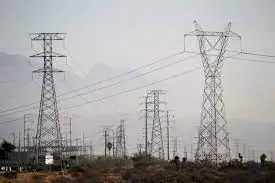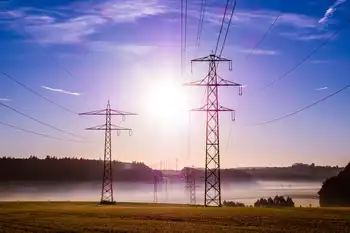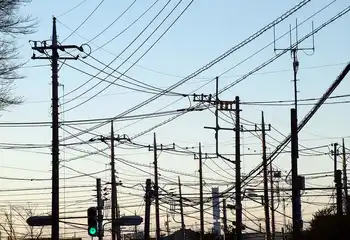Greenpeace crashes coal meeting using phony front
By Reuters
Substation Relay Protection Training
Our customized live online or in‑person group training can be delivered to your staff at your location.

- Live Online
- 12 hours Instructor-led
- Group Training Available
When The McCloskey Group figured out who the Institute for Energy Solutions really were, they decided to let Greenpeace have their booth under the phone name and make brief remarks, organizers said.
The conference managers did take the precaution of adding security because of Greenpeace's reputation for confrontational, disruptive tactics, they said. The muscle was used once, to eject one Greenpeace member.
Greenpeace spokesman Carroll Muffett was allowed to speak against coal as a polluting fuel for a few minutes, and the team manned a booth offering information and anti-coal paraphernalia.
"It's a lot of value for the money," said Muffett of the $8,500 co-sponsorship fee that made the Greenpeace front group publishers of the conference brochure.
In the brochure, an ad for the fake Institute seems pro-coal, but if readers go to the www.tomorrowsenergytoday.org website, they are redirected to www.coal-is-dirty.com.
The Greenpeace team handed out business cards that read: "The Institute for Energy Solutions is a joke. So is clean coal." The cards were signed Greenpeace.
Muffett said the environmental action group merely copied a tactic used by several industries, creating a benign-sounding but phone front to promote their position.
Gerard McCloskey, chairman of the consulting and publishing company that bears his name, said it was his second experience with Greenpeace recently.
The group disrupted a conference in London several months ago, and he decided to try to have a conversation with Greenpeace, McCloskey said.
"I thought what we should do was engage them," McCloskey said. "All of us have children, grandchildren. It was good to see Greenpeace here willing to put their argument out."
As the conference broke for lunch, Greenpeace had Muffett's 9-year-old daughter and two boys ages 10 and 11 handing out asthma inhalers and masks.
That offended some attendees. "I think that using kids... was inappropriate," McCloskey said.
Muffett demurred, saying the 10-year-old boy has asthma and the youngsters wanted to be there. "What to me is unconscionable is to sell a product when you know it gives children asthma," Muffett said.
Muffett said he was pleased with the effort and called the conference attendees "quite receptive" after they listened quietly and responded to his remarks with polite applause. "Maybe the coal industry's excessively polite," McCloskey said.
McCloskey said he would like to address a Greenpeace meeting. "I would like to persuade them that they're wrong in key areas," he said.











